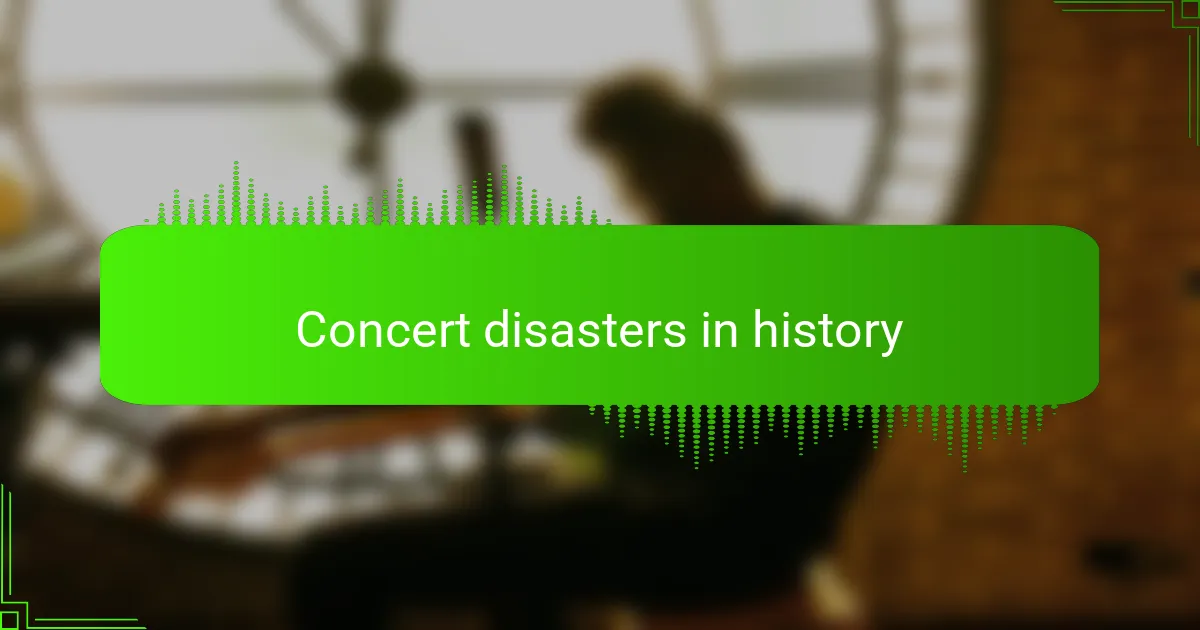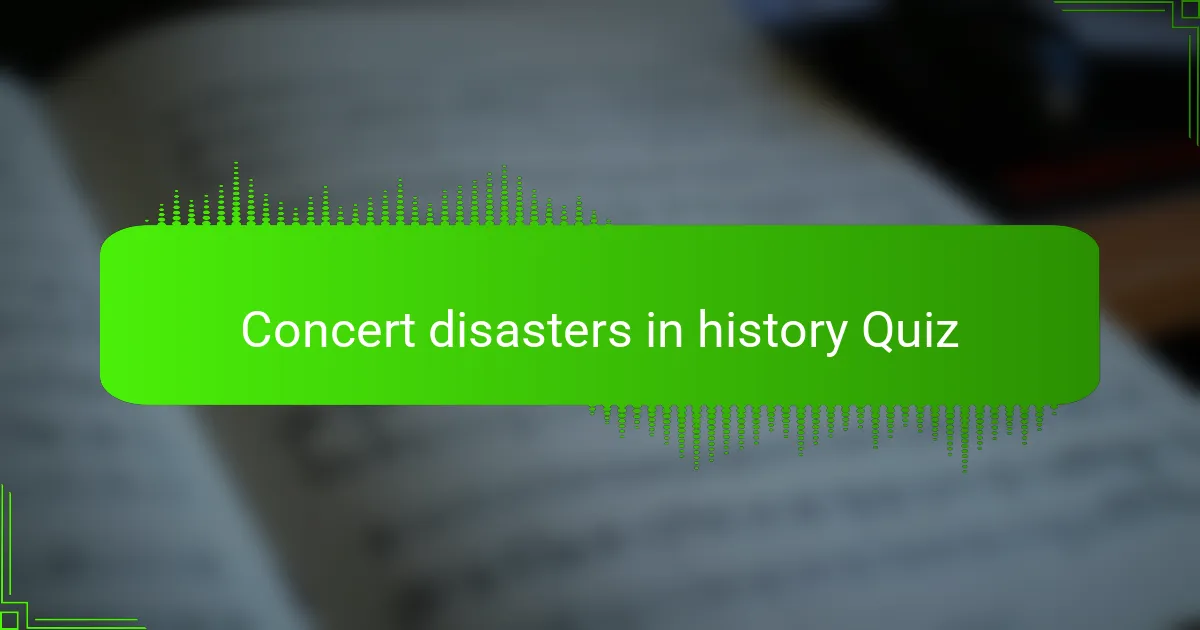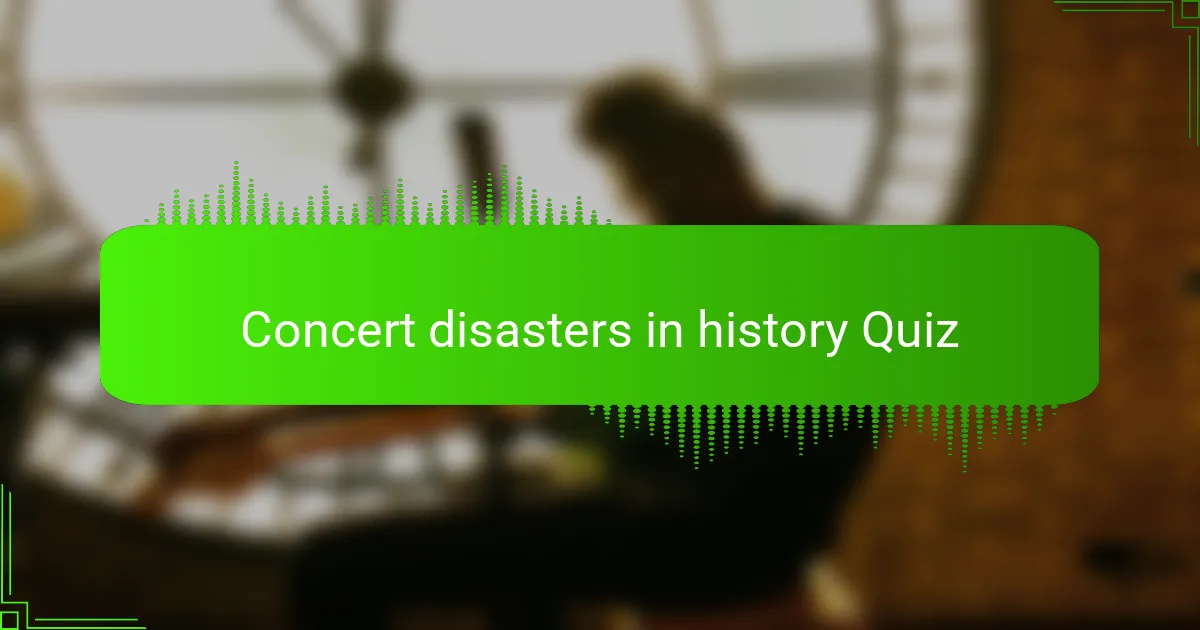
Congratulations! You’ve Completed the Quiz!
Thank you for participating in our quiz on concert disasters in history. We hope you found the experience both enlightening and engaging. It’s essential to reflect on how the music world has faced challenges and tragedies, and this quiz served as a reminder of the importance of safety and awareness in live events.
Throughout the quiz, you might have learned about some significant incidents and the evolution of protocols aimed at preventing such occurrences. Understanding these events helps us appreciate the resilience of artists, fans, and organizers who strive to create safe and enjoyable environments for music lovers everywhere. The lessons gleaned from these tragedies can foster a greater respect for the live music experience.
Now that you’ve completed the quiz, we invite you to explore the next section of our page dedicated to concert disasters in history. Dive deeper into the facts and stories behind these events. Expanding your knowledge will not only enrich your appreciation for music but also equip you with insights into the importance of safety at live performances. Happy reading!

Concert disasters in history
The Dynamics of Concert Disasters: An Overview
Concert disasters encompass various incidents that occur during live music performances, leading to injury, chaos, or even fatalities. These events can be caused by a multitude of factors, including inadequate safety measures, extreme weather, or crowd surges. Significant examples include the 1979 disco inferno at the Who concert in Cincinnati, which resulted in eleven deaths due to a stampede. Understanding the dynamics of such disasters emphasizes the importance of concert safety protocols and crowd management.
Notable Incidents: The 1992 Roskilde Festival Tragedy
The 1992 Roskilde Festival in Denmark witnessed a catastrophic event when nine fans were crushed to death during a Pearl Jam performance. The band attempted to halt the show upon realizing the situation but were ultimately unsuccessful in preventing the tragedy. This incident spurred changes in safety regulations for festivals globally, highlighting the need for responsible crowd control measures. The impact of this disaster resonates in the music community, driving ongoing discussions about concert safety.
Environmental Factors in Concert Disasters: The Case of the Indiana State Fair
The Indiana State Fair stage collapse in 2011, caused by strong wind gusts, serves as a critical example of how natural elements can lead to disastrous outcomes. Five people died, and dozens were injured when the stage fell just moments before the band Sugarland was set to perform. This incident underscores the importance of assessing weather conditions and implementing strict safety guidelines for outdoor events. It led to reconsiderations of infrastructure durability in concert settings.
Legal Ramifications Following Concert Disasters: The Great White Fire
The 2003 fire at the Station nightclub in Rhode Island, during a Great White concert, resulted in 100 fatalities. This disaster revolved around the use of flammable pyrotechnics in an overcrowded venue, lacking adequate exits. Legal repercussions included lawsuits against the band, venue owners, and security personnel. The case highlighted the critical need for enforceable fire safety regulations in concert venues, prompting a nationwide review of policies to ensure safety at music events.
Technological Advances in Preventing Concert Disasters
Recent advancements in technology have significantly enhanced safety measures at concerts. Innovations such as crowd monitoring systems, improved staging materials, and real-time weather tracking work to minimize risks. The use of drones for overseeing concert areas has become a new frontier in crowd management, providing safety teams with real-time data. This progress in technology aims to prevent the unfortunate occurrences seen in historical concert disasters and ensure a secure experience for attendees.
What are some notable concert disasters in history?
Notable concert disasters in history include the 1979 Cincinnati concert of The Who, where 11 fans were crushed to death due to overcrowding at the entrance. Another significant incident was the 2003 Rhode Island nightclub fire during a Great White performance, which killed 100 people and injured many more due to inadequate fire exits and the use of pyrotechnics indoors.
How did the 1979 disaster at The Who concert occur?
The 1979 disaster at The Who concert occurred when fans rushed the gates to enter the concert venue in Cincinnati. The rush created a dangerous crush, causing 11 attendees to suffocate or be crushed against a wall. This incident highlighted issues with crowd control and venue safety protocols.
Where did the tragic events of the 2003 Great White concert take place?
The tragic events of the 2003 Great White concert took place at The Station nightclub in West Warwick, Rhode Island. A fire, sparked by indoor pyrotechnics, spread rapidly, resulting in 100 fatalities and over 200 injuries. This incident raised awareness about fire safety regulations in public venues.
When did the concert disaster involving Guns N’ Roses occur, and what happened?
The Guns N’ Roses concert disaster occurred on July 2, 1991, in St. Louis, Missouri. A riot broke out after lead singer Axl Rose encourages fans to rush the stage. The chaos led to widespread violence and injuries, with significant property damage at the venue.
Who was responsible for safety measures after the 2003 Rhode Island nightclub fire?
After the 2003 Rhode Island nightclub fire, the state government took responsibility for revising safety regulations for public venues. The tragedy prompted the establishment of stricter fire codes and enforcement to prevent future incidents, including requirements for fire exits and venue capacity limits.

